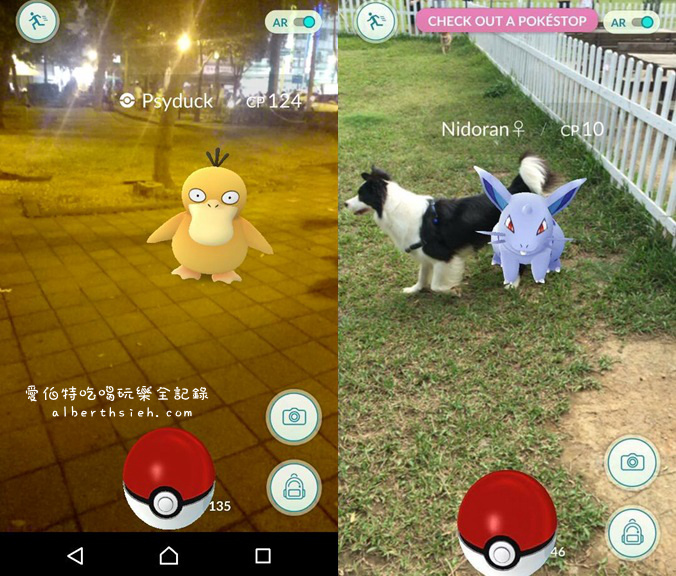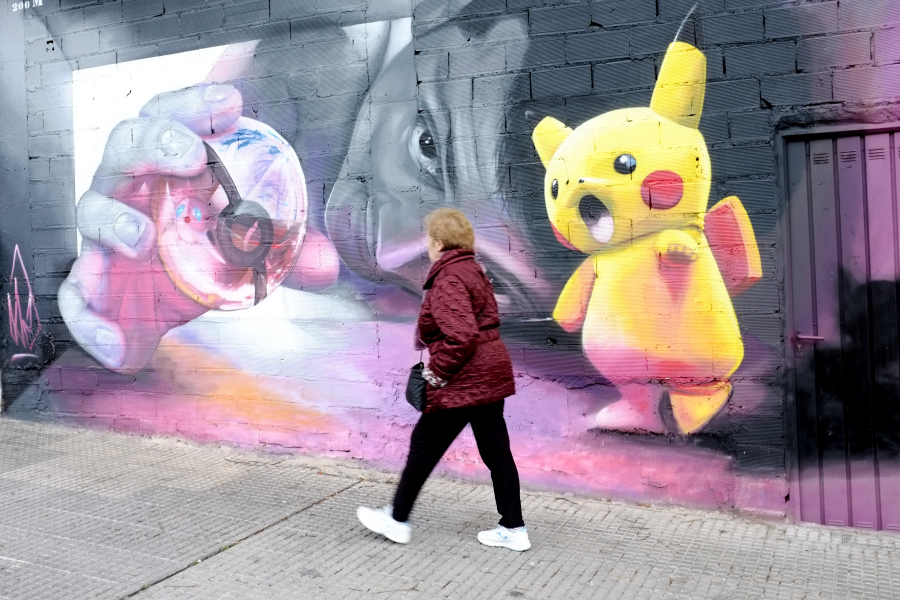What Pokémon GO can teach conservationists about public engagement
In six days, players collected as much data as naturalists had in 400 years
Traci Lawson / Flickr
I don’t usually pay much attention to smartphone games, but earlier this week I read one of the most stunning facts I think I have ever read in a scientific paper: in a six-day span of 2016, Pokémon GO players collected so much data on virtual animals that it would take naturalists about 400 years to gather the same amount in real life. If conservationists could somehow generate this level of enthusiasm for our planet's real biodiversity, we just might be able to save the planet.
The field of conservation science is no stranger to leveraging technology to connect people with nature. The NGO Conservation International, for example, has developed two short virtual reality films to take viewers into the Amazonian jungle and underwater in Indonesia's Raja Ampat islands. Anyone can watch these films from their laptops or smartphones. National Geographic has followed suit with their own virtual reality short, "The Protectors," which lets the viewer experience what it's like to be in the Congo defending elephants from poachers.
Yet, conservationists have not created anything as wildly popular as Pokémon GO. I'm puzzled by how people can get so excited about virtual monsters while ignoring the urgent plights of the very real wildlife. Virtual reality films are a great start, but we need to do a lot more to translate the success of Pokémon GO, and the potential of augmented reality in general, into our efforts to document and protect wildlife. So, what are we doing wrong, and how can we fix it?
I don't think I'm the only one asking this question. Leejiah Dorward, lead author on the Pokémon GO paper and a PhD student at Oxford University, and his colleagues, attracted a lot of attention with their work: the paper, published in Conservation Letters, was one of the journal's most accessed articles in 2017.
The pika in Pikachu
One thing that Pokémon GO does well, and that conservationists can learn from, is that it teaches game players about ecology without being overtly educational. Many Pokémon look like real animals (have you ever noticed that Pikachu resembles a pika?) and can only be found in particular habitats. Their geographic distributions are limited by environmental characteristics like climate, distance to water, and soil type. Some species are common, some are rare, and some – like ice- and flying-type Pokémon Delibird – only appear seasonally. While I don't think that the game's creators set out to teach people about fundamental ecological principles, they've inadvertently done a great job. The parallels are so strong that Pokémon GO has already been used to teach ecology in some universities.

Pika Pika
David Kingham / Flickr
The mere act of playing the game also mirrors the scientific process. For example, the longer you play, the more types of Pokémon you encounter, and you are more likely to find relatively rare "species." Much like birdwatching, the game exploits into the human desire to collect and catalog things, a psychological lure unabashedly spelled out in the original Pokémon tagline, "Gotta catch 'em all!" Each time you catch a new type of Pokémon, it gets added to your Pokédex. And it can take a lot of patience, dedication, and fieldwork to actually catch all of the Pokémon.
Augmented reality is a major opportunity to leverage human psychology for nature's benefit. Video game creators have long understood how to manipulate the brain's dopamine response to keep us glued to our screens, and linking that nice jolt of neurotransmitters that we get from our screens to our deep psychological connection to the natural world would fundamentally change human beings' relationships to our planet.

Albert Hsieh / Flickr
This is where I think Pokémon GO-style augmented reality smartphone games for conservation could make a huge difference. But, unlike Dorward and his colleagues, I don't think integrating real animals into the existing Pokémon GO game is the best way to tackle the challenge. Instead, I envision a new augmented reality game, modeled after the Conservation International and National Geographic virtual reality films, that takes players on a series of virtual expeditions into Earth's most far-flung and biodiverse ecosystems.
Gotta catch 'em all
Similar to Pokémon GO, this game could be played from anywhere, and would be available to all 2.5 billion (and counting) of the world's smartphone users. All players would have access to all of the expeditions, but the abundances of wildlife that appear would change depending on the characteristics of each player's local environment. Instead of throwing Poké Balls at cartoon monsters, the player could fill the role of wildlife photographer, with the best photos entered into real international photo contests. Eventually, camera trap photos could even be integrated into the game, so that players could identify photos for research right in the game. Players might even earn points for real-life sustainable behavior, like picking up trash they encounter in their own environments while on the virtual expeditions. There are dozens of possibilities for possible game features.

Who is the true cartoon monster?
David Santaolalla / Flickr
Through such games, we can virtually expose players to ecosystems and wildlife that they may not have the opportunity to experience in person – as well as the things that threaten the existence of these places and species. Experiences are known to shape human behavior, and integrating this fact into wildlife conservation efforts might make a significant difference for the planet.
It's easy to wring our hands about "nature deficit disorder" and the fact that people today seem more interested in capturing virtual monsters than they are in protecting the actual animals around them. But I see this as our own failing in conservation. In an ever changing world, where many things are competing for people's time and attention, how do we keep nature relevant? The tools for innovation are at hand. Now it's our job to turn "gotta catch 'em all" into "gotta save 'em all."
Corrections: An earlier version of this article stated that the Pokémon Ghastly, and other ghost-type Pokémon, only appears seasonally. Ghastly appears year-round at night. Additionally, the article originally stated that players collected an amount equal 400 years of recorded specimens. It has been updated to reflect that the amount of Pokémon GO data collected was of the amount of data available in the Global Biodiversity Information Facility, which only reflects a small percentage of the world's documented specimens.